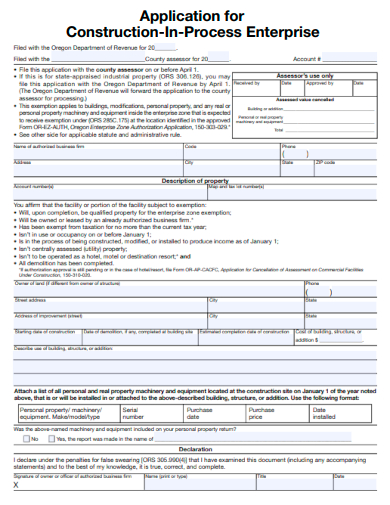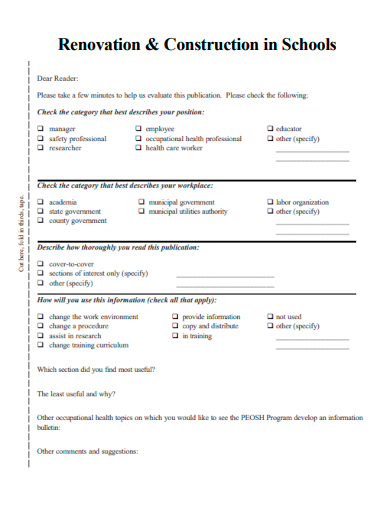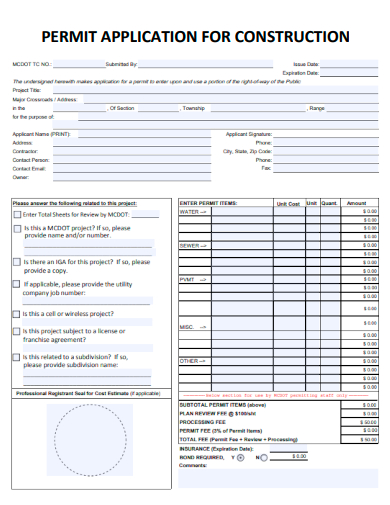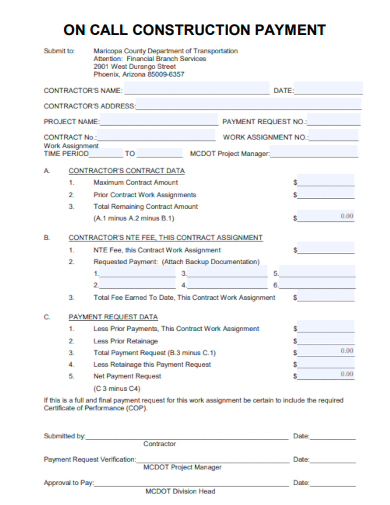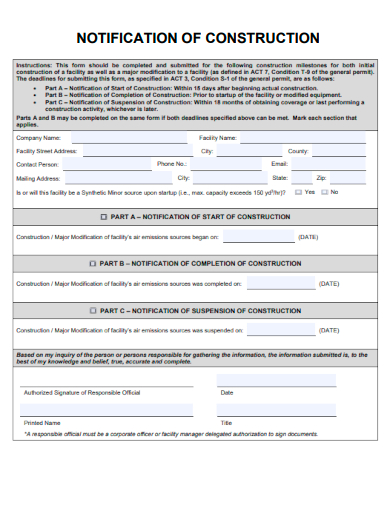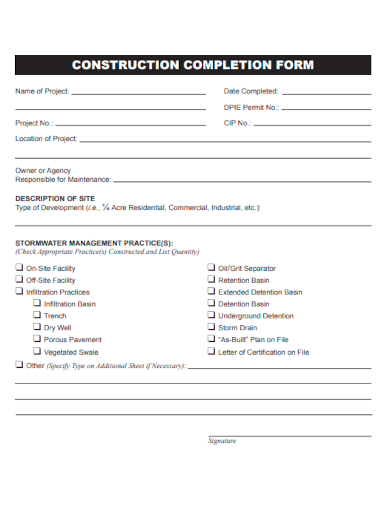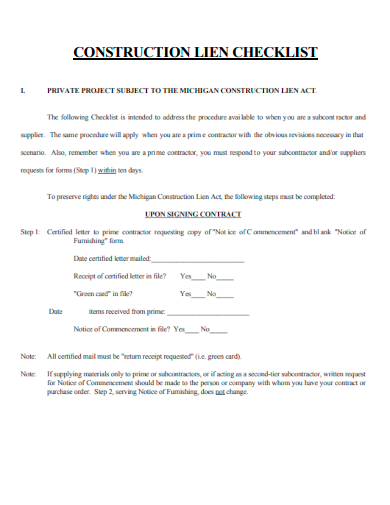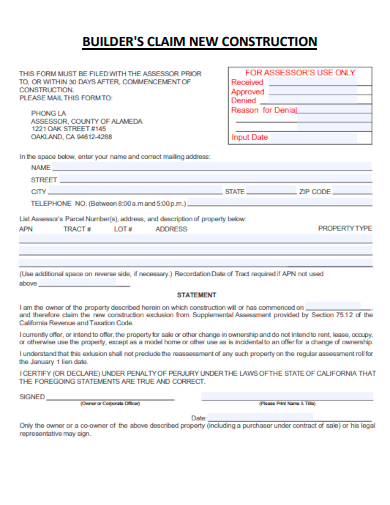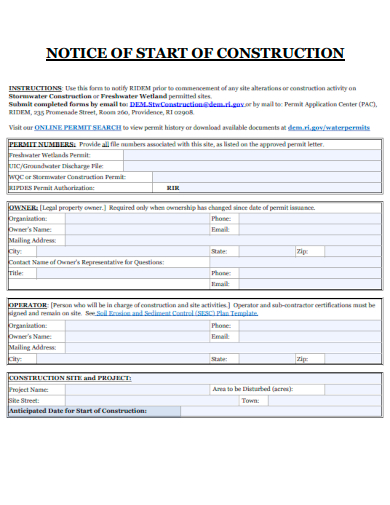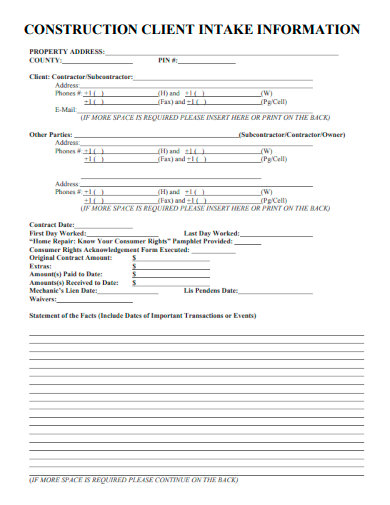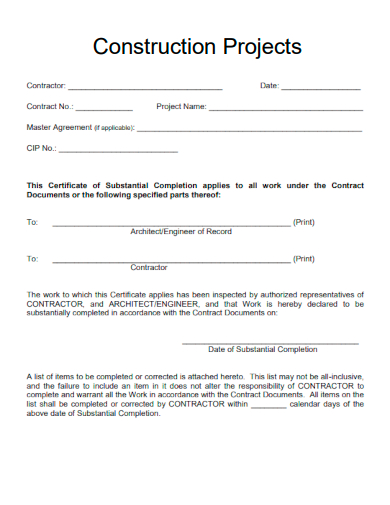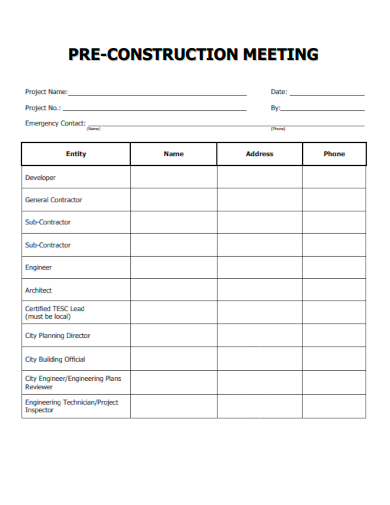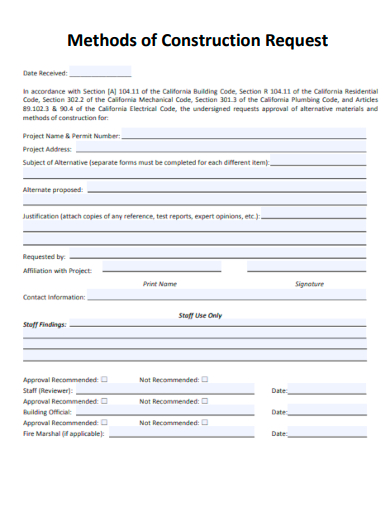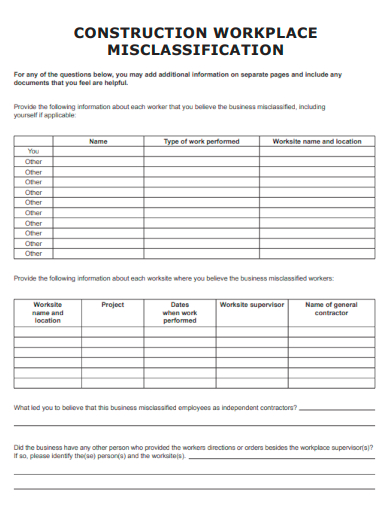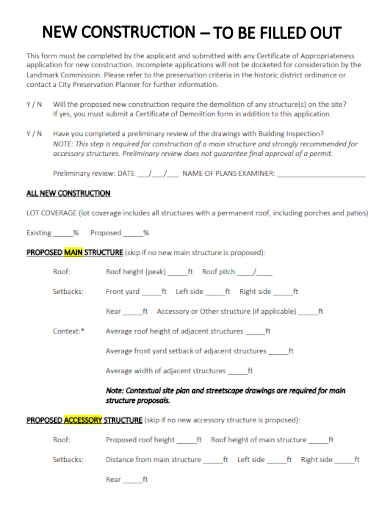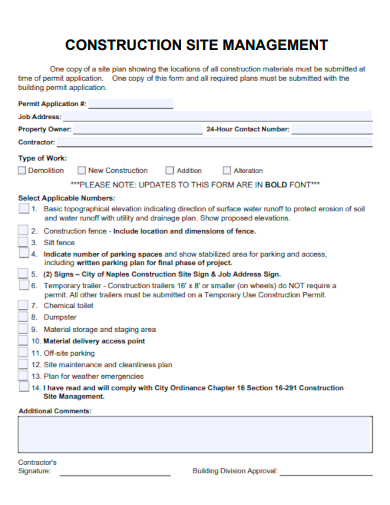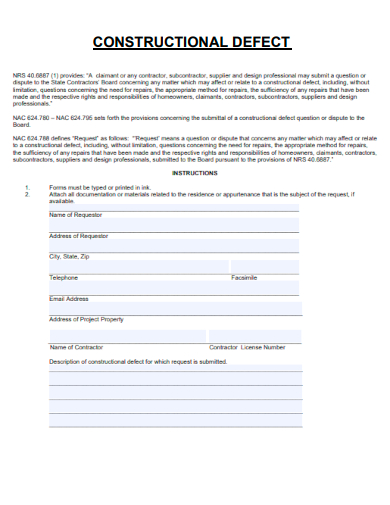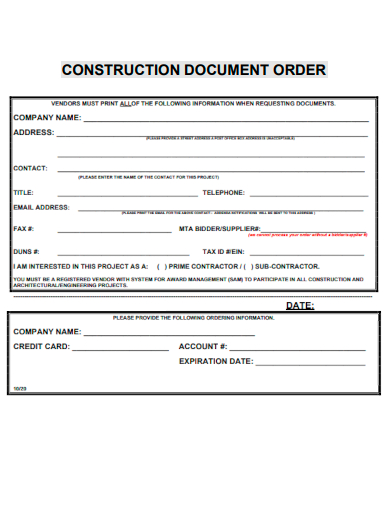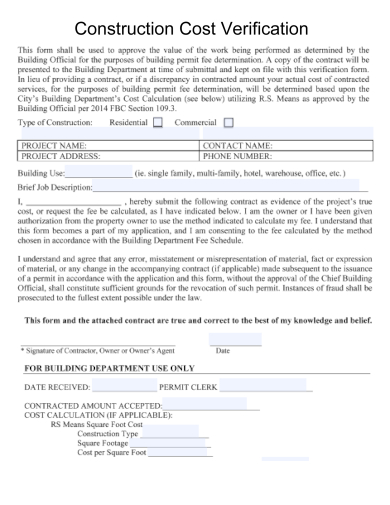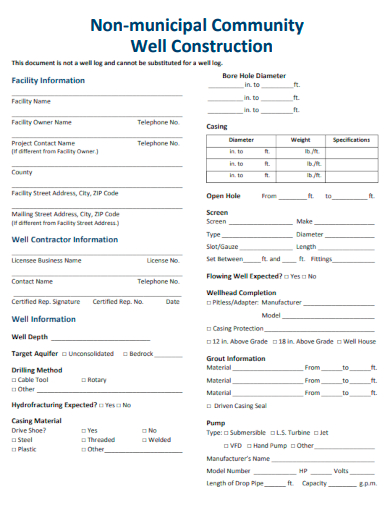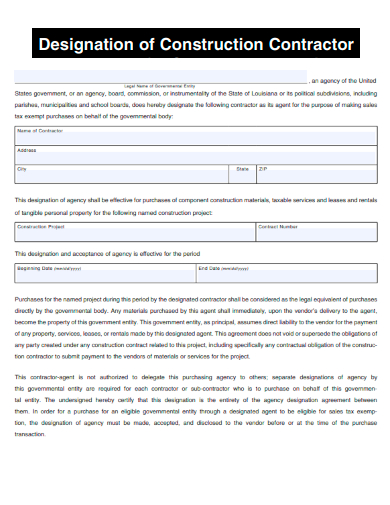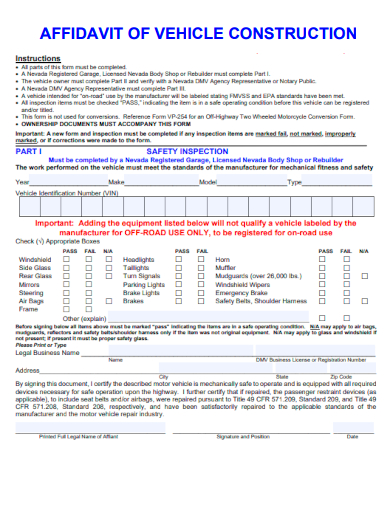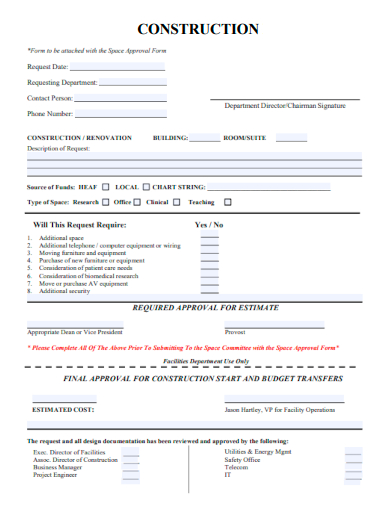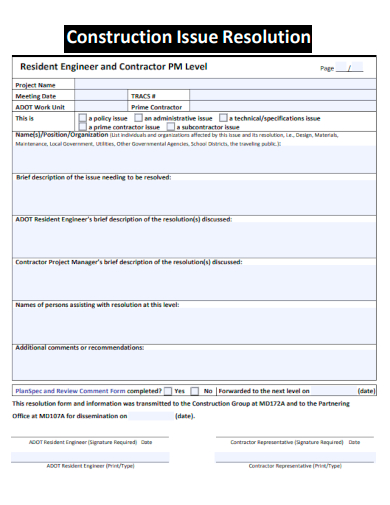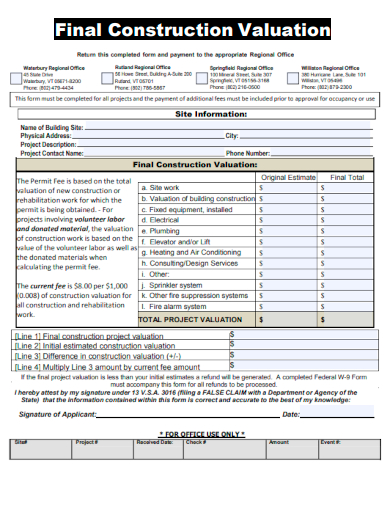Mastering the intricacies of construction projects demands meticulous organization and foresight. The Sample Construction Template is designed to be your cornerstone in project management. From organizing critical tasks to visualizing project timelines, this template is a game-changer for construction professionals. Immerse yourself in its features and watch as your construction processes become more streamlined, projects more transparent, and results more commendable. Transform your construction journey today.
FREE 31+ Construction Samples
1. Sample Construction Quotation Template

2. Sample Construction Proposal Template
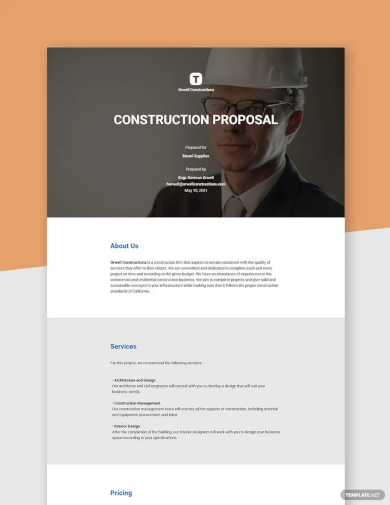
3. Sample Construction Daily Report Template
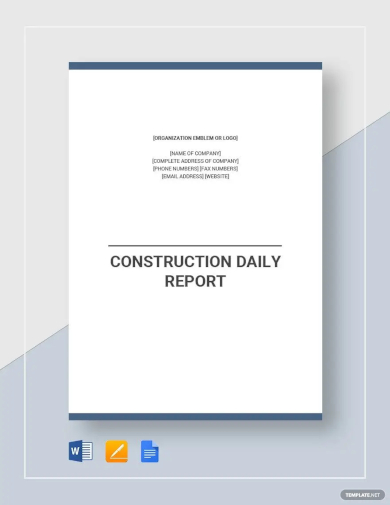
4. Sample Construction Estimate Template
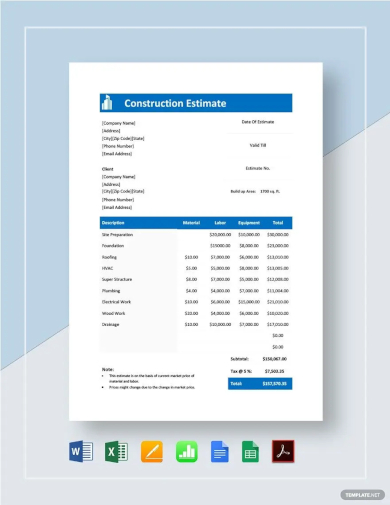
5. Sample Construction Purchase Order Template
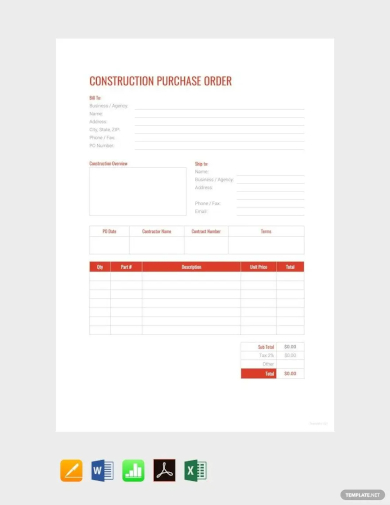
What is a Construction Template?
The construction industry, with its multifaceted processes and myriad tasks, demands meticulous organization and keen oversight. At the heart of this organizational structure often lies a construction template—a powerful tool designed to streamline tasks, optimize workflows, and enhance efficiency throughout the lifecycle of a construction project.
A construction template can be broadly defined as a pre-established format or structure that aids in planning, managing, and executing various aspects of construction projects. These templates can be digital, like those used in construction management software, or physical, like checklists and form documents.
Features and Benefits of Construction Templates:
Standardization: One of the prime advantages of using templates is the standardization they bring. With consistent formats and procedures, it becomes easier to maintain a uniform approach across various projects, enhancing the predictability and consistency of outcomes.
Efficiency: Instead of starting from scratch, templates provide a blueprint that can be customized as per specific project needs. This not only saves time but also ensures that key steps or components aren’t overlooked.
Cost-effectiveness: By streamlining processes and reducing errors, templates indirectly contribute to cost savings. Mistakes in construction can be expensive, and by minimizing the risk of oversight or mismanagement, templates play a role in budget adherence.
Communication: A standardized template aids in clear communication among stakeholders. When everyone is on the same page, using the same format, there’s less room for misunderstandings or misinterpretations.
Compliance: Especially in regions with strict construction norms and regulations, templates can ensure that all necessary compliances are met. They can be tailored to include region-specific guidelines, ensuring projects meet or exceed local regulatory standards.
Types of Construction Templates:
Project Management Templates: These are designed to oversee the entirety of a construction project. They can help track timelines, manage resources, and monitor budgets. They often encompass other specific templates within them.
Task Checklist Templates: As the name suggests, these templates break down the various tasks required in a project, helping ensure that nothing is overlooked.
Budgeting and Cost Templates: These are focused on the financial aspects of a project, helping manage costs, track expenses, and maintain profitability.
Safety and Compliance Templates: Safety is paramount in construction. These templates ensure that all safety guidelines are followed, and necessary precautions are taken.
Bid and Proposal Templates: For contractors bidding on projects, these templates help in presenting a clear, structured, and professional proposal to potential clients.
Documentation and Contract Templates: These assist in creating standardized contracts, agreements, and other crucial documentation.
A construction template is an indispensable tool in the modern construction landscape. Whether it’s a large-scale infrastructure project or a smaller residential build, templates offer a structured and efficient way to manage the various facets of construction. They not only enhance productivity but also contribute significantly to the successful and timely completion of projects. As the industry continues to evolve, so will the complexity and capabilities of these templates, making them even more integral to the world of construction.
6. Sample Application for Construction-In-Process Template
7. Sample Renovation & Construction in Schools Template
8. Sample Permit Application for Constructions Template
9. Sample On Call Construction Payment Template
10. Sample Notification of Construction Template
11. Sample Construction Completion Form Template
12. Sample Construction Lien Checklist Template
13. Sample Builders Claim New Construction Template
Types of Construction Templates
The construction industry, known for its diverse projects and detailed processes, often relies on templates to ensure smooth operations, clarity in communication, and adherence to best practices. These templates are invaluable in setting standards, improving accuracy, and streamlining workflows. Let’s delve deeper into the different types of construction templates available and their significance:
Project Management Templates
Project Management Templates are the backbone of a well-organized construction endeavor. They guide the overall planning, execution, monitoring, and completion of construction projects. Such templates include elements like setting objectives, identifying resources, allocating tasks, and tracking progress. Common visuals like Gantt charts and timelines are often integrated. Their primary role is to ensure projects stick to their timelines, remain within the designated scope, and adhere to set budgets.
Task Checklist Templates
For a detailed and segmented approach, Task Checklist Templates are essential. They transform the complex processes of a construction project into actionable items, ensuring each task is addressed. Often categorized by phases or departments, these templates play a crucial role in ensuring no step is missed, which in turn maintains the quality and timeline of the project.
Budgeting and Cost Templates
Financial oversight is a critical component of construction, and this is where Budgeting and Cost Templates come into play. They provide a structured approach to manage and monitor the financial facets of a project. These templates help in delineating estimated costs from actual ones, keeping track of variances, and setting aside funds for contingencies. Their main objective is to maintain financial transparency and ensure projects remain profitable.
Safety and Compliance Templates
Construction sites, by their very nature, pose various risks. Safety and Compliance Templates are designed to mitigate these risks by ensuring stringent adherence to safety protocols. These templates encompass elements like safety checklists, hazard assessments, and incident reports. Their pivotal role is to safeguard the well-being of workers and ensure alignment with legal and regulatory standards.
Bid and Proposal Templates
To secure projects, contractors and firms must present compelling bids. Bid and Proposal Templates aid in this endeavor by providing a structured format to outline project understandings, proposed solutions, timelines, costs, and engagement terms. A professional and well-organized bid can greatly enhance a contractor’s prospects of securing a project.
Documentation and Contract Templates
Clear communication and understanding between parties are crucial in construction projects. Documentation and Contract Templates serve this purpose by offering standardized formats for contracts, agreements, and other vital documentation. These templates clarify expectations, rights, and responsibilities, thereby preventing potential disputes and misunderstandings.
Quality Assurance and Control Templates
The reputation of a construction project hinges on its quality. Quality Assurance and Control Templates are designed to oversee and maintain the standards of construction work. From inspection checklists to defect tracking, these templates ensure that the construction output aligns with the desired quality benchmarks.
Resource Allocation and Scheduling Templates
Efficient management of resources, both human and material, is central to a successful construction project. Resource Allocation and Scheduling Templates assist in this aspect by helping managers oversee task assignments, ascertain resource availability, determine shift schedules, and allocate equipment. Proper utilization and management of resources ensure that projects progress seamlessly without bottlenecks.
14. Sample Notice of Start of Construction Template
15. Sample Construction Client Intake Information Template
16. Sample Construction Projects Template
17. Sample Construction Contract Template
18. Sample Pre-Construction Meeting Template
19. Sample Methods of Construction Request Template
20. Sample Construction Workplace Misclassification Template
21. Sample New Construction Template
22. Sample Construction Site Management Template
23. Sample Construction Defect Template
Tips for Creating Effective Construction Templates
Creating a construction template is a meticulous task that demands attention to detail, foresight, and understanding of the construction process. A well-designed template not only streamlines work but also ensures consistency and reduces the margin of error. Here are some essential tips to keep in mind when creating construction templates:
Understand the Purpose and Audience
Before designing any template, it’s crucial to understand its purpose. Is it for project management, budgeting, safety protocols, or quality assurance? Identifying the objective will guide the content and structure of the template. Additionally, consider the end-users. A template designed for architects might differ from one intended for site supervisors or laborers.
Prioritize Clarity and Simplicity
The best templates are straightforward and easy to use. Avoid overloading your template with excessive details that might confuse users. Stick to the essential components and ensure that they’re presented in a clear, logical order. Use simple language and avoid industry jargon unless it’s universally understood.
Ensure Flexibility
Every construction project is unique, and while the basic structure remains the same, specific details might vary. Therefore, it’s vital that your template is flexible enough to accommodate these differences. Ensure there are spaces for additional notes, or sections that can be customized according to the project’s needs.
Incorporate Visual Elements
Incorporating diagrams, flowcharts, or graphical representations can simplify complex processes. For instance, a Gantt chart in a project management template or a visual layout in a site safety plan can be more effective than blocks of text. Visual elements not only make the template more user-friendly but also enhance comprehension.
Gather Feedback and Revise
Before finalizing your template, circulate it among a few potential users for feedback. This will provide insights into any missing elements, confusing sections, or areas of improvement. Use this feedback to refine and improve the template, ensuring it’s as effective and user-friendly as possible.
Stay Updated with Industry Standards
Construction practices and regulations evolve over time. It’s crucial to periodically review and update your templates in line with industry best practices and regulatory changes. This ensures that your templates remain relevant and compliant.
Include a Guide or Instructions
Especially for intricate templates or those with multiple components, consider adding a brief guide or set of instructions. This will help users understand how to fill out the template correctly and ensure consistency in its usage across different projects or teams.
Opt for Digital Compatibility
While paper templates have their place, digital templates offer advantages like easy sharing, updates, storage, and integration with other software tools. Ensure your templates are available in formats compatible with popular construction management software or can be easily digitized if needed.
Test and Iterate
After the initial creation, test your template on a real project. This hands-on approach will highlight practical challenges or gaps that might not be evident in theory. Use these insights to iterate and refine your template.
Creating an effective construction template requires a blend of industry knowledge, clarity, adaptability, and user-centric design. By keeping the end-users and the template’s objective at the forefront, and by continuously iterating based on real-world feedback, you can design a tool that becomes an invaluable asset for any construction project.
24. Sample Construction Document Order Template
25. Sample Construction Cost Verification Template
26. Sample Non-municipal Community Well Construction Template
27. Sample Designation of Construction Contractor Template
28. Sample Affidavit of Vehicle Construction Template
29. Sample Editable Construction Template
30. Sample Construction Issue Resolution Template
31. Sample Final Construction Valuation Template
32. Sample Construction and Demolition Waste Template
Benefits of Using Free Templates for Construction Projects
The construction industry is multifaceted, with each project presenting its unique challenges. To manage these intricacies and ensure smooth execution, having standardized templates can be immensely beneficial. While there are paid options available, many firms and individual professionals are recognizing the advantages of using free templates. Here are the notable benefits of employing free templates in construction projects:
Cost Savings
The most obvious advantage is the financial benefit. Investing in advanced software or bespoke templates can be expensive, especially for small firms or individual contractors. By using free templates, companies can allocate their resources to other essential areas of the project, ensuring maximum value without compromising on organization.
Ease of Access
Free templates are readily available online and can be easily downloaded in various formats, such as PDF, Word, or Excel. This accessibility ensures that even those unfamiliar with specific software can quickly get their hands on a functional and effective template.
Standardization of Processes
Consistency is crucial in construction. Free templates provide a standardized format, ensuring that all team members, regardless of their role, follow the same procedures and documentation practices. This uniformity reduces misunderstandings, streamlines communication, and ensures everyone is on the same page.
Time Efficiency
Starting from scratch can be time-consuming. Free templates provide a foundational structure that professionals can build upon. Instead of spending time designing a format or layout, project managers and teams can focus on inputting relevant data and moving the project forward.
Reduced Errors
With a structured format in place, there’s less room for oversight. Templates often come with essential fields highlighted, ensuring that critical information is not missed. This structure minimizes errors stemming from omissions or misplaced data.
Flexibility and Customization
While free templates offer a foundational structure, they are often designed with customization in mind. Users can tweak and adjust them to better suit their specific project needs, ensuring a tailored fit without the need to create something entirely from scratch.
Enhanced Professionalism
Using standardized templates enhances the professional image of a firm or contractor. Presenting organized, uniform documents to stakeholders, clients, or regulatory bodies can leave a positive impression, showcasing meticulous planning and a commitment to excellence.
Facilitates Learning for Beginners
For those new to the construction industry, free templates can serve as learning tools. They offer insights into industry standards, required documentation, and general best practices. By working with these templates, newcomers can quickly acclimatize to the industry’s expectations and standards.
Promotes Collaboration
Many free templates, especially those available on cloud platforms, promote collaborative work. Team members can concurrently access, modify, and comment on documents, fostering real-time collaboration and ensuring everyone remains updated on project developments.
Free templates for construction projects offer a plethora of benefits, from cost savings to enhanced efficiency and professionalism. While it’s essential to ensure the chosen template fits the project’s requirements and adheres to industry standards, with the right selection, these free resources can be invaluable assets in the successful completion of construction endeavors.
Related Posts
FREE 11+ Construction Notice Samples in PDF MS Word
FREE 12+ Construction Action Plan Samples in PDF MS Word
FREE 10+ Construction Receipt Templates in MS Word Apple ...
FREE 6+ Sample Construction Proposal Letters [ Project, Church ...
FREE 11+ Weekly Construction Report Samples in PDF MS Word
FREE 4+ Construction Sponsorship Proposal Samples in PDF MS ...
FREE 15+ Construction Project Budget Samples in PDF MS Word ...
FREE 11+ Construction Gantt Chart Samples in PDF MS Word
FREE 10+ Construction Cleaning Proposal Samples in MS Word ...
FREE 5+ HR Management Plan for Construction Project Samples in ...
FREE 9+ Sample Construction Management Agreement Templates ...
FREE 10+ Construction Project Plan Samples in MS Word Google ...
FREE 9+ Construction Implementation Plan Samples [ Project ...
FREE 10+ Residential Construction Proposal Samples [Project ...
FREE 10+ Construction Communication Plan Samples in PDF MS ...

